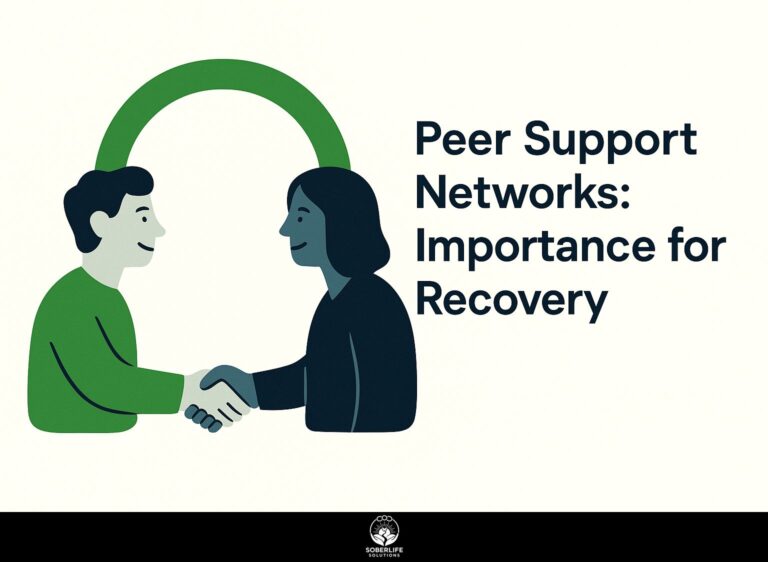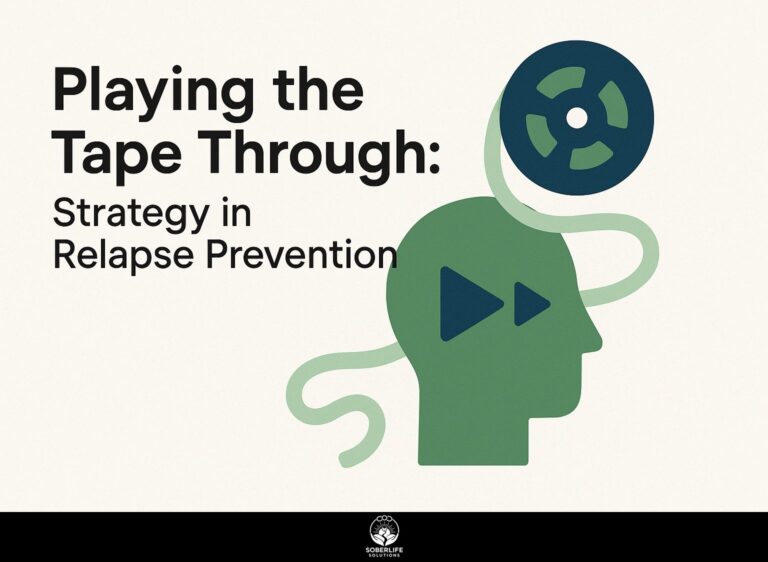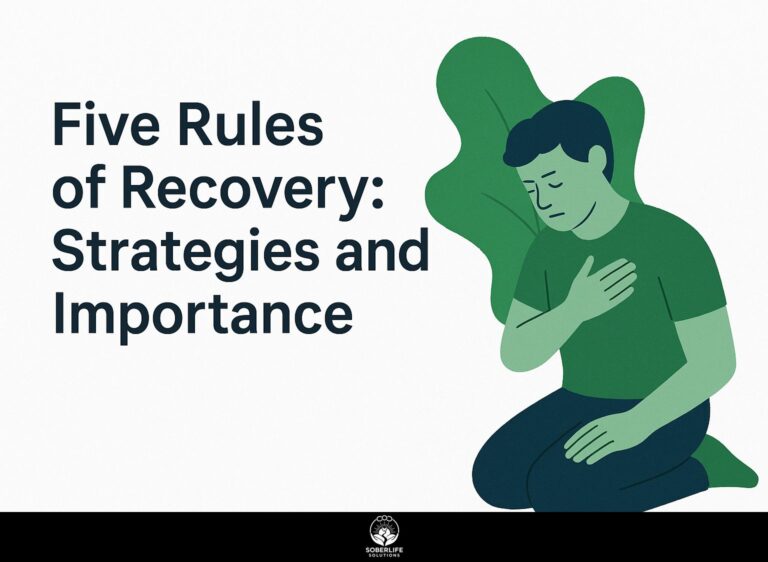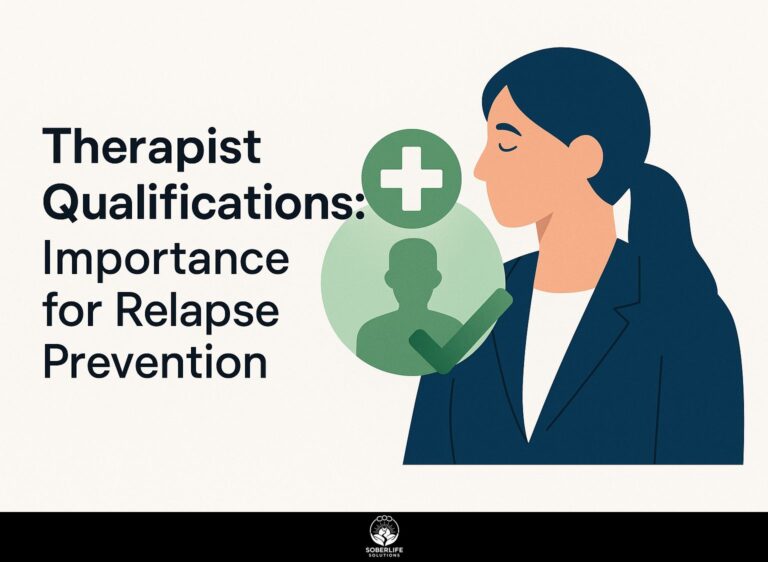Rational Emotive Behavior Therapy: Tools and Application
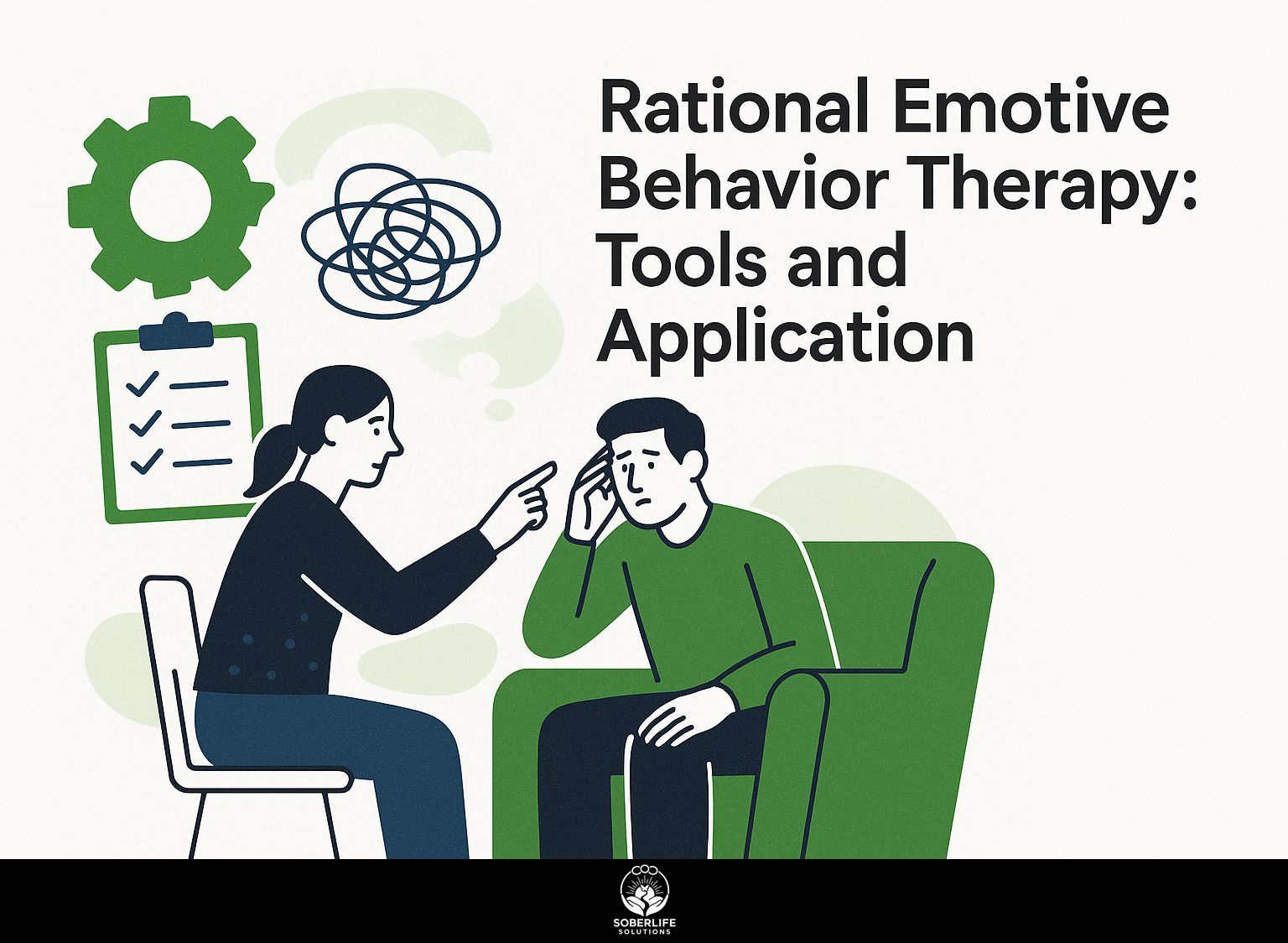
Learn how Rational Emotive Behavior Therapy (REBT) can alter your approach to mental health. Created by Albert Ellis, REBT gives therapists effective methods to help clients rethink their thoughts and improve participation, especially for those dealing with Generalized Anxiety Disorder. This article explores key tools and uses of REBT, helping you to question illogical thoughts and build emotional strength. Learn how these strategies can improve your practice and help make lasting changes.
Key Takeaways:
History and Development
Albert Ellis introduced REBT in 1955, emphasizing the connection between beliefs and emotional well-being, which has influenced therapy practices worldwide.
Since it started, REBT has changed a lot, especially in how it fits with cognitive-behavioral therapy (CBT). Major milestones include the publication of ‘A Guide to Rational Living’ in 1961, which made REBT accessible to a broader audience, and the formation of the Albert Ellis Institute in 1958, dedicated to training professionals.
These days, REBT is increasingly accepted by mental health professionals, especially for its useful role in treating anxiety and depression. This is shown by its presence in different treatment guidelines and psychotherapy training courses, aligning with insights from Psychology Today, which highlights the therapy’s transformative impact.
Core Principles
REBT is built on core principles that posit emotional disturbances stem from irrational beliefs and that changing these beliefs can lead to emotional regulation.
Central to REBT is the ABC model, which stands for Activating event, Beliefs, and Consequences. For instance, when someone criticizes you (Activating event), the thought “I need everyone to like me” can lead to feeling anxious (Consequence). As Healthline explains in a recommended reading, understanding the ABC model is crucial for effectively applying REBT strategies.
By identifying and disputing such beliefs-using techniques like evidence gathering or rational responses-individuals can alter their emotional responses. Tools like thought diaries or cognitive restructuring exercises help track these beliefs and replace them with more rational thoughts, facilitating improved emotional control and resilience against psychological challenges.
Key Concepts of REBT
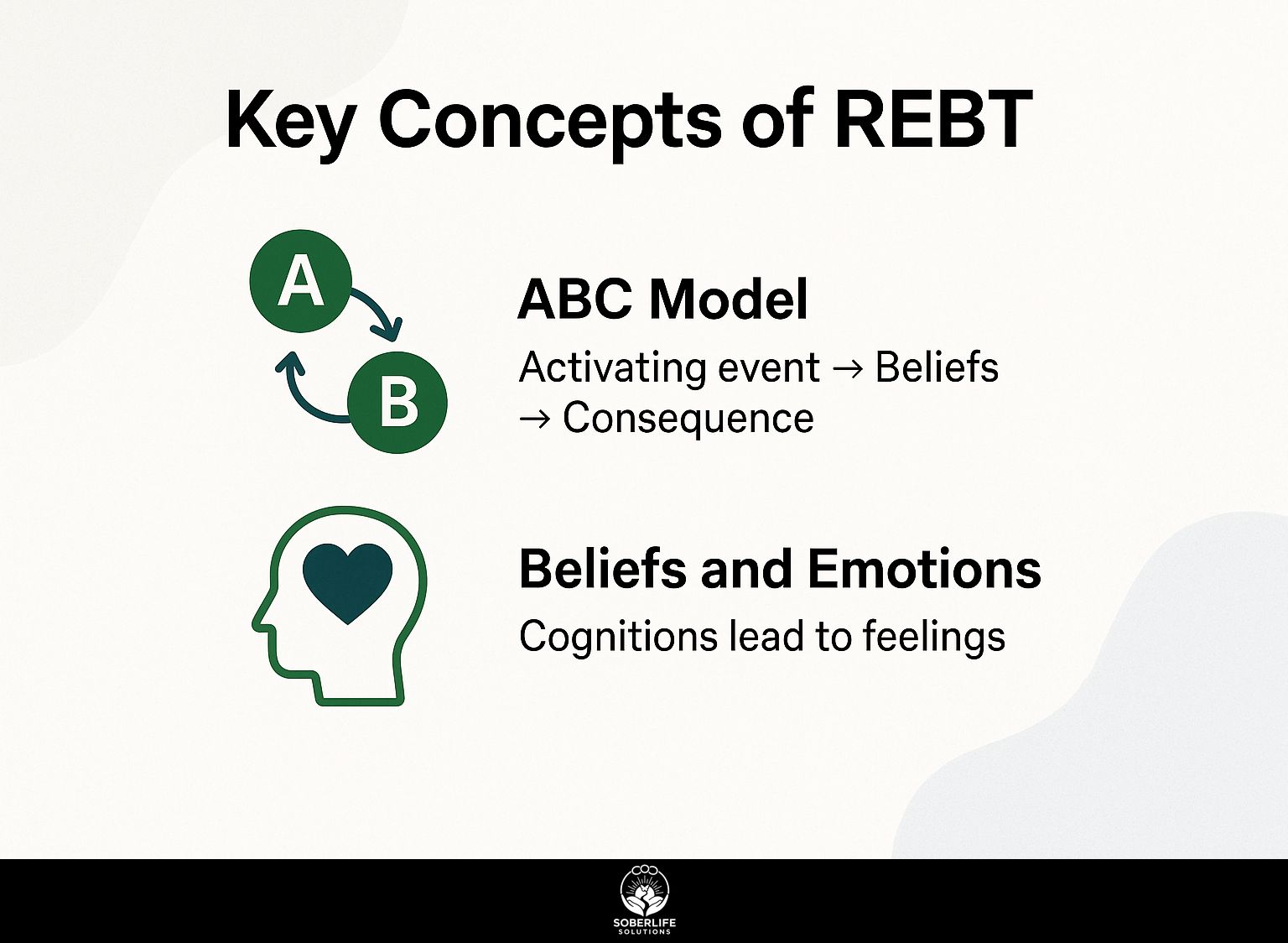
Knowing the main ideas of REBT improves therapists’ ability to support clients with emotional challenges and irrational thoughts.
ABC Model
The ABC Model shows the process by which initial events cause beliefs, which then lead to outcomes, pointing out the steps to changing thought patterns.
For instance, a therapist could guide a client through an exercise where they first identify an activating event, such as being criticized at work.
Next, they would examine the basic belief, like `I must do everything perfectly all the time.’ The therapist helps the client understand the consequences of this belief, which could be feeling anxious or avoiding situations.
When clients often reflect on their beliefs, such as allowing themselves to make mistakes, they can shift their mindset and lessen harmful results. This helps them respond better to stress.
Beliefs and Emotions
REBT focuses on how core belief systems influence emotional responses, especially in clients experiencing Generalized Anxiety Disorder and Major Depressive Disorder.
This therapy recognizes that irrational beliefs, such as “I must be perfect to be worthwhile” or “It’s catastrophic if things don’t go my way,” can lead to overwhelming anxiety or deep feelings of inadequacy.
By identifying these beliefs, clients can begin to challenge and reframe them. For instance, replacing the perfectionist thought with a more realistic one, like “I can still be valued even if I make mistakes,” can significantly reduce emotional distress.
Utilizing cognitive restructuring techniques alongside behavioral practices, like gradual exposure to feared situations, establishes a more balanced emotional response over time. Research findings published in Frontiers in Psychology support the effectiveness of these techniques in mitigating irrational beliefs and improving emotional health.
REBT Tools and Techniques
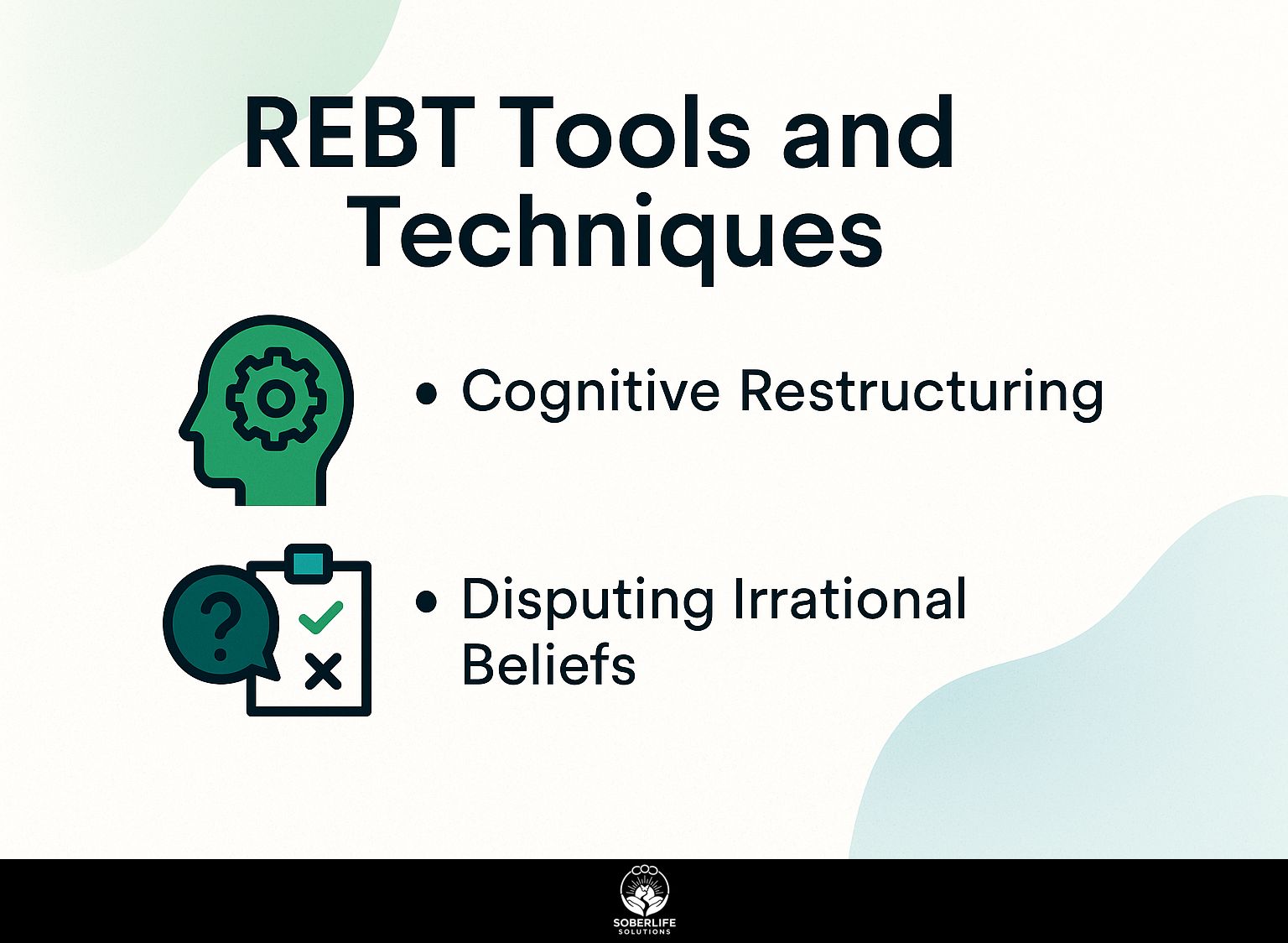
REBT uses different tools and methods that help therapists deal with clients’ irrational beliefs and support emotional health. For those interested in exploring additional therapeutic approaches, you might find our insights on SMART Recovery techniques and their benefits in relapse prevention particularly useful.
Cognitive Restructuring
Cognitive restructuring involves identifying and reframing irrational thoughts to promote healthier emotional responses, often resulting in lasting change.
To carry out cognitive restructuring effectively, therapists can apply methods like using thought logs to monitor negative thoughts, using Socratic questioning to question these beliefs, and practicing positive affirmation exercises to support healthier viewpoints.
For example, when a client expresses a fear of failing, the therapist may guide them to dissect this belief, asking questions like, “What evidence supports this fear?” This helps clients recognize cognitive distortions.
Over time, these practices can help clients build resilience, leading to more positive thought patterns and improved emotional well-being.
Disputing Irrational Beliefs
Challenging unreasonable beliefs helps clients look at their incorrect ways of thinking. It is an important technique in REBT that supports personal growth.
To effectively dispute irrational beliefs, therapists can guide clients through specific exercises.
Begin by identifying a negative thought, then have clients write down evidence that supports and contradicts this belief.
For example, if a client thinks, ‘I must be perfect,’ ask them to reflect on past instances where imperfection led to growth or learning.
Use dialogues where therapists can role-play to demonstrate alternative responses. This approach encourages critical thinking and helps clients change unhelpful beliefs into more logical ones, resulting in better mental health.
Applications of REBT
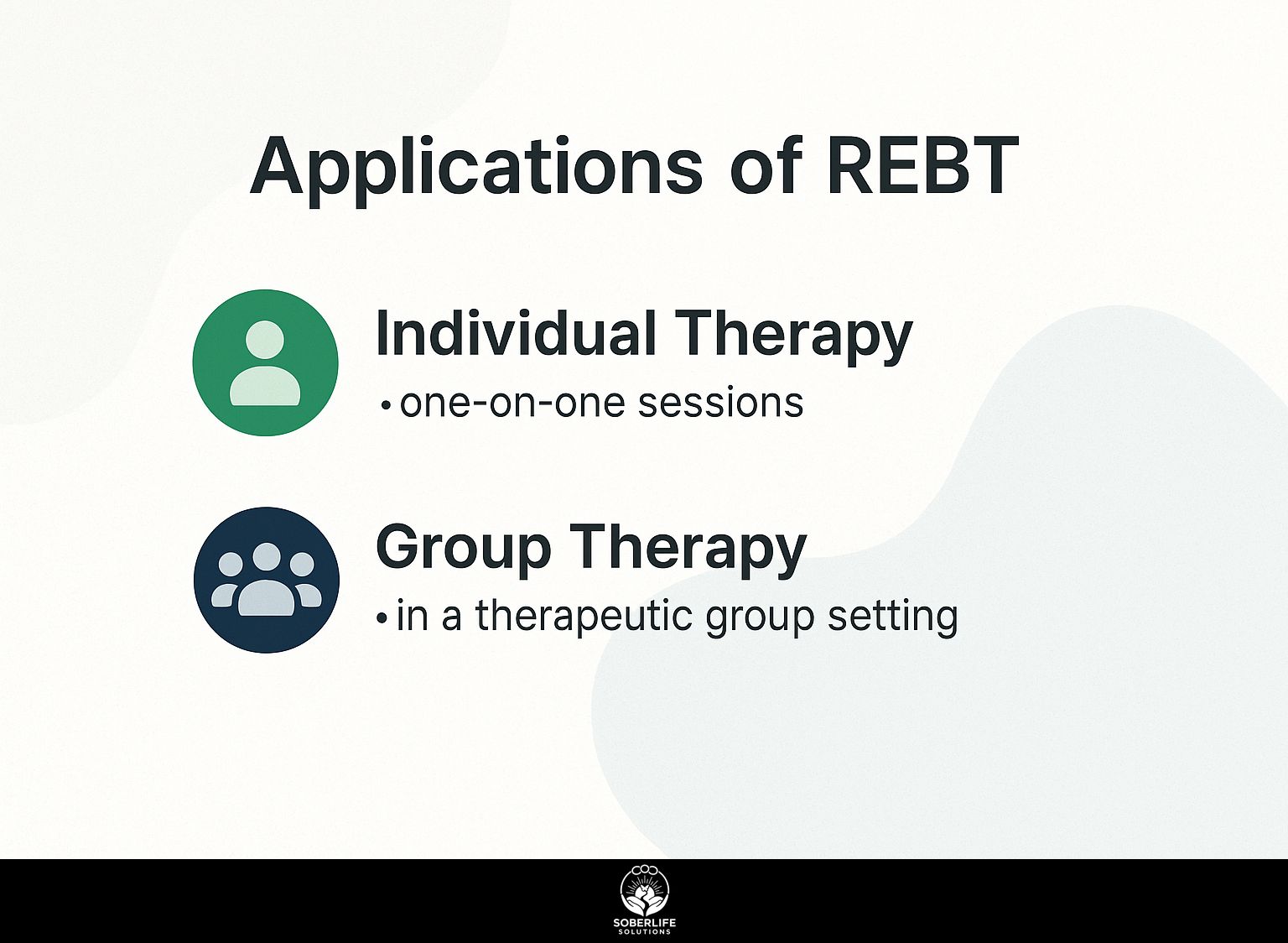
REBT works well in both individual and group therapy, meeting various client needs.
Individual Therapy
In individual therapy, REBT uses specific methods that focus directly on complicated client problems, resulting in greater involvement and results.
Therapists can customize REBT strategies by assessing clients’ specific beliefs and emotions. For instance, if a client struggles with perfectionism, the therapist might employ cognitive restructuring to challenge irrational thoughts about failure.
Role-playing can also be effective, allowing clients to practice responses to situations that trigger anxiety.
Homework assignments that encourage self-reflection on daily events can help reinforce newly learned coping strategies.
By using these methods together, therapists can design a session that specifically meets the client’s individual needs, helping them understand more and become stronger.
Group Therapy
In group therapy, REBT facilitates shared learning experiences, allowing participants to confront irrational beliefs collectively and support each other.
To effectively apply REBT in group therapy, begin by establishing a safe environment where all members feel comfortable sharing.
Use role-playing exercises to illustrate common irrational beliefs, then encourage participants to identify personal examples.
Use group discussions that question these beliefs with clear questions like, “What proof do you have for this thought?”
Use tools like handouts on thinking errors and worksheets to monitor progress.
Increase responsibility by having team members pair up for weekly meetings to support their dedication to changing these beliefs.
Effectiveness of REBT
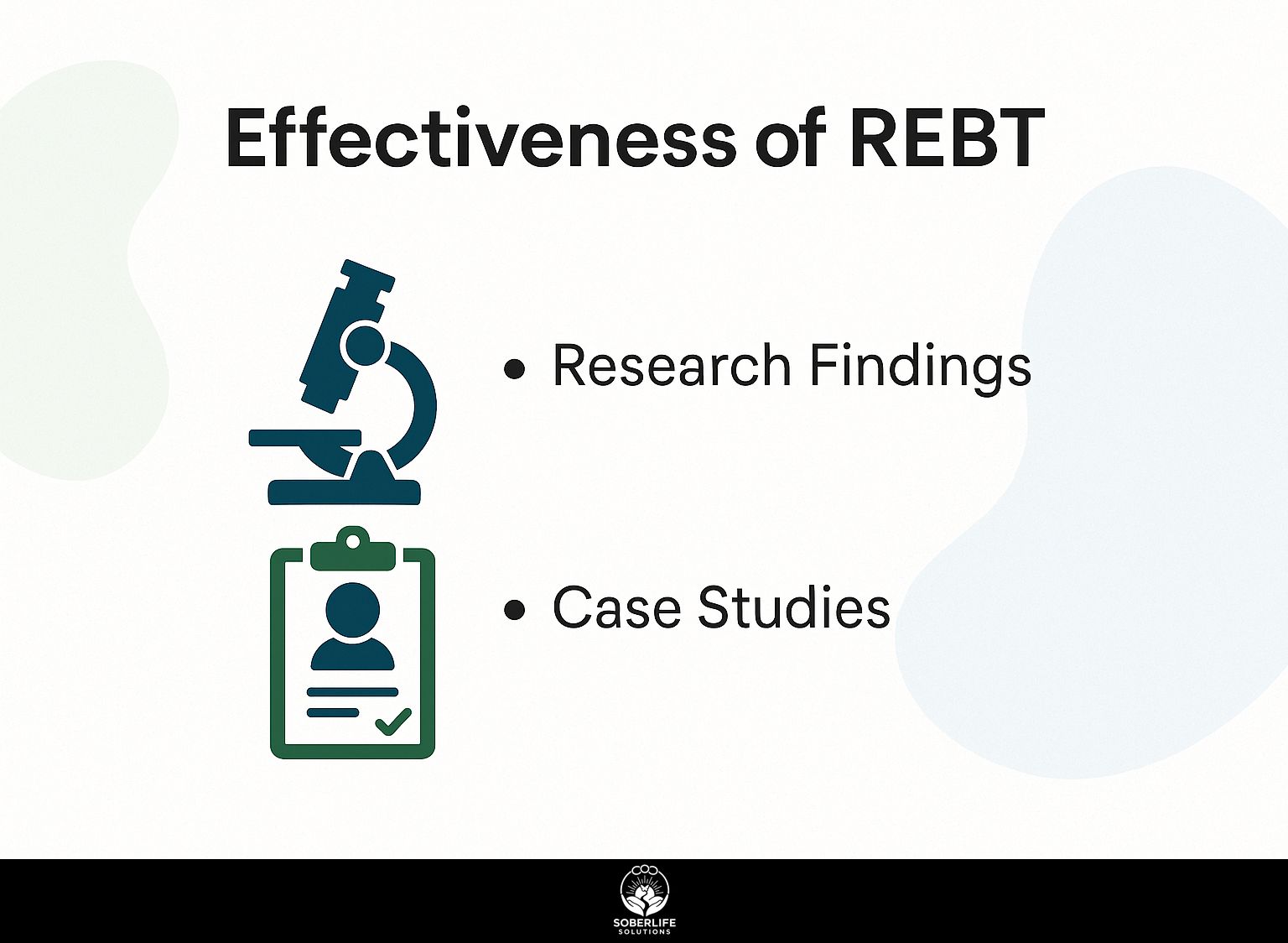
Research shows that REBT is effective in improving how people manage their emotions and thinking.
Research Findings
Studies indicate that REBT significantly reduces symptoms of anxiety and depression, with a reported 60% improvement in clients diagnosed with Generalized Anxiety Disorder.
The success of REBT comes from its clear method, helping people spot irrational thoughts and swap them with logical ones.
For instance, a therapist might use cognitive restructuring techniques to help a client challenge negative thought patterns, focusing on evidence-based reasoning.
Tools like mood tracking apps or worksheets can help clients identify triggers over time, improving their awareness of emotional reactions.
Meeting regularly, preferably each week, strengthens these methods, building lasting resistance to anxiety and depression.
Case Studies
Examples from actual situations show how REBT changes lives by focusing on each client’s unique requirements.
Consider the case of Sarah, a 35-year-old professional battling anxiety. Through REBT, she identified irrational beliefs stemming from perfectionism. Her therapist used tested techniques to help her challenge thoughts such as ‘I must always succeed,’ promoting a healthier mindset.
Another example is Tom, a graduate student facing academic pressure. His sessions focused on disputing beliefs like `Failing means I am a failure.’ By reframing these thoughts, Tom developed resilience, leading to improved academic performance and self-esteem.
Both cases show that REBT works well in changing how people think for long-term improvements.
Frequently Asked Questions
What is Rational Emotive Behavior Therapy (REBT)?
Rational Emotive Behavior Therapy is a form of psychotherapy developed by psychologist Albert Ellis. It helps people recognize and change beliefs and thoughts that cause negative feelings and actions.
What tools are used in Rational Emotive Behavior Therapy?
The main tools used in REBT include self-reflection, cognitive restructuring, and problem-solving techniques. These tools help individuals challenge and change their irrational beliefs and develop healthier ways of thinking and coping with difficult situations.
How is Rational Emotive Behavior Therapy applied in therapy sessions?
In therapy sessions, the therapist works with the individual to identify and challenge their irrational beliefs and thoughts. They also offer information about mental health and teach ways to handle emotions and behaviors in a more reasonable and flexible manner.
What types of issues can be addressed with Rational Emotive Behavior Therapy?
REBT can be used to address a wide range of mental health issues, including anxiety, depression, anger management, relationship problems, and self-esteem issues. It can also be helpful for individuals dealing with stress and life transitions.
Is Rational Emotive Behavior Therapy effective?
Many studies have shown that REBT works well as a type of therapy, leading to great improvements in symptoms and everyday life for those who use it. It has also been found to be just as effective as other types of therapy, such as cognitive-behavioral therapy.
Can Rational Emotive Behavior Therapy be used in combination with other forms of therapy?
Yes, REBT can be used in combination with other types of therapy, such as medication or other forms of talk therapy. It can also be integrated into various treatment approaches to meet the unique needs of the individual. It has been found to be a helpful addition to many treatment plans.

